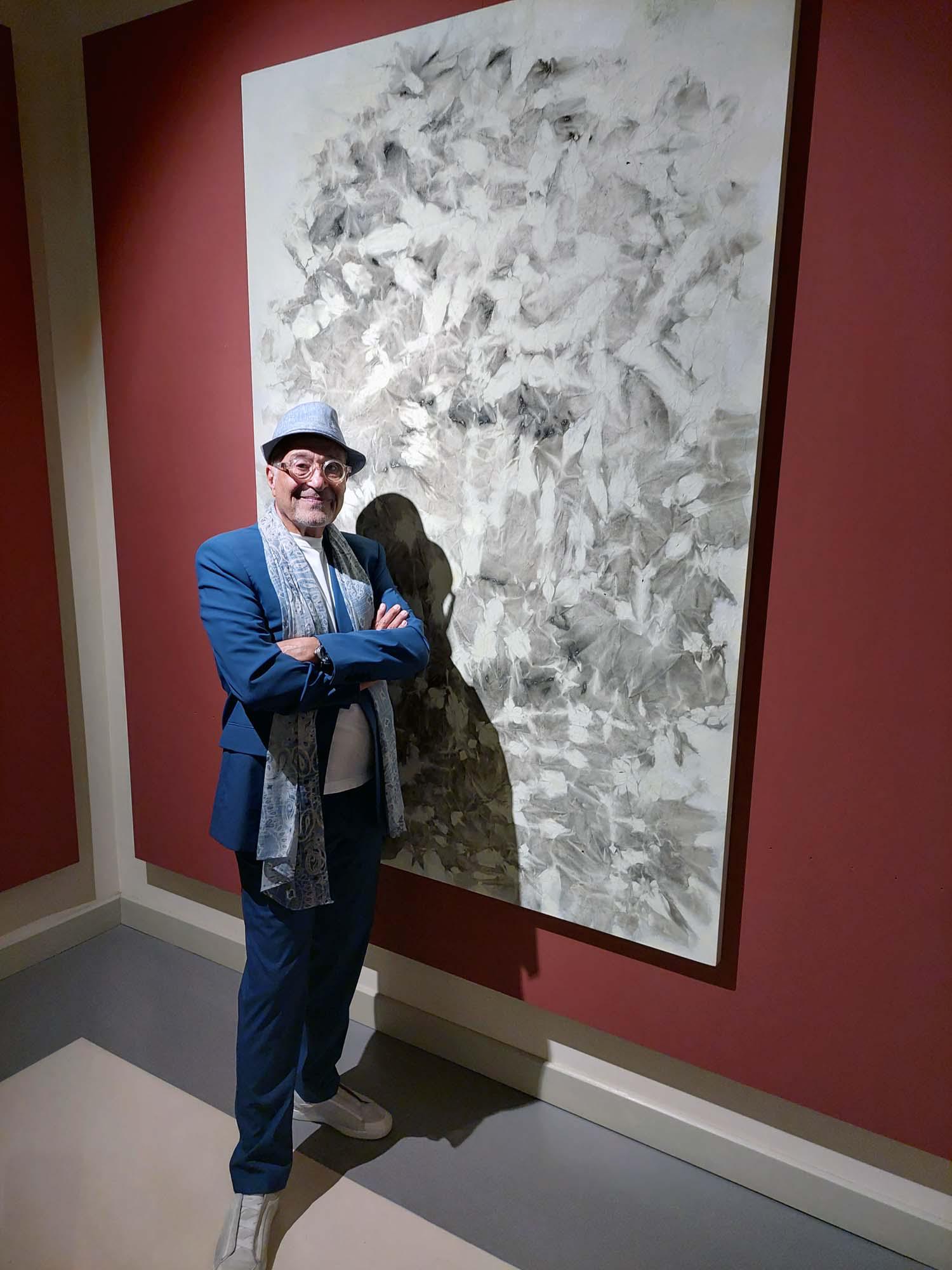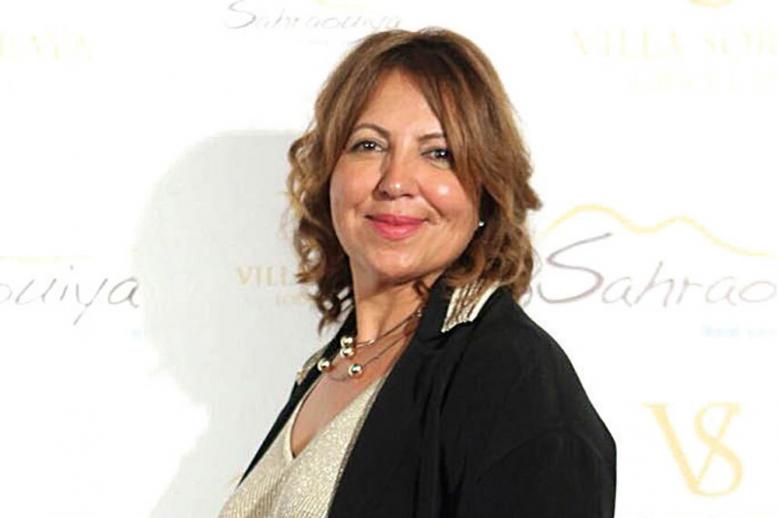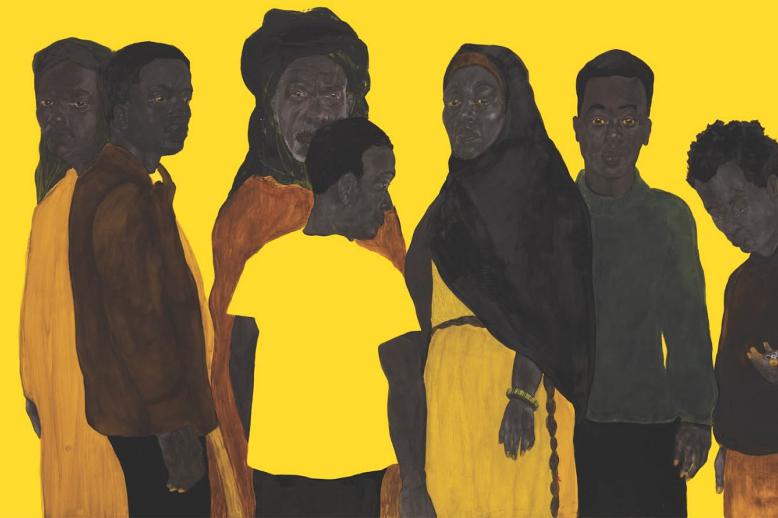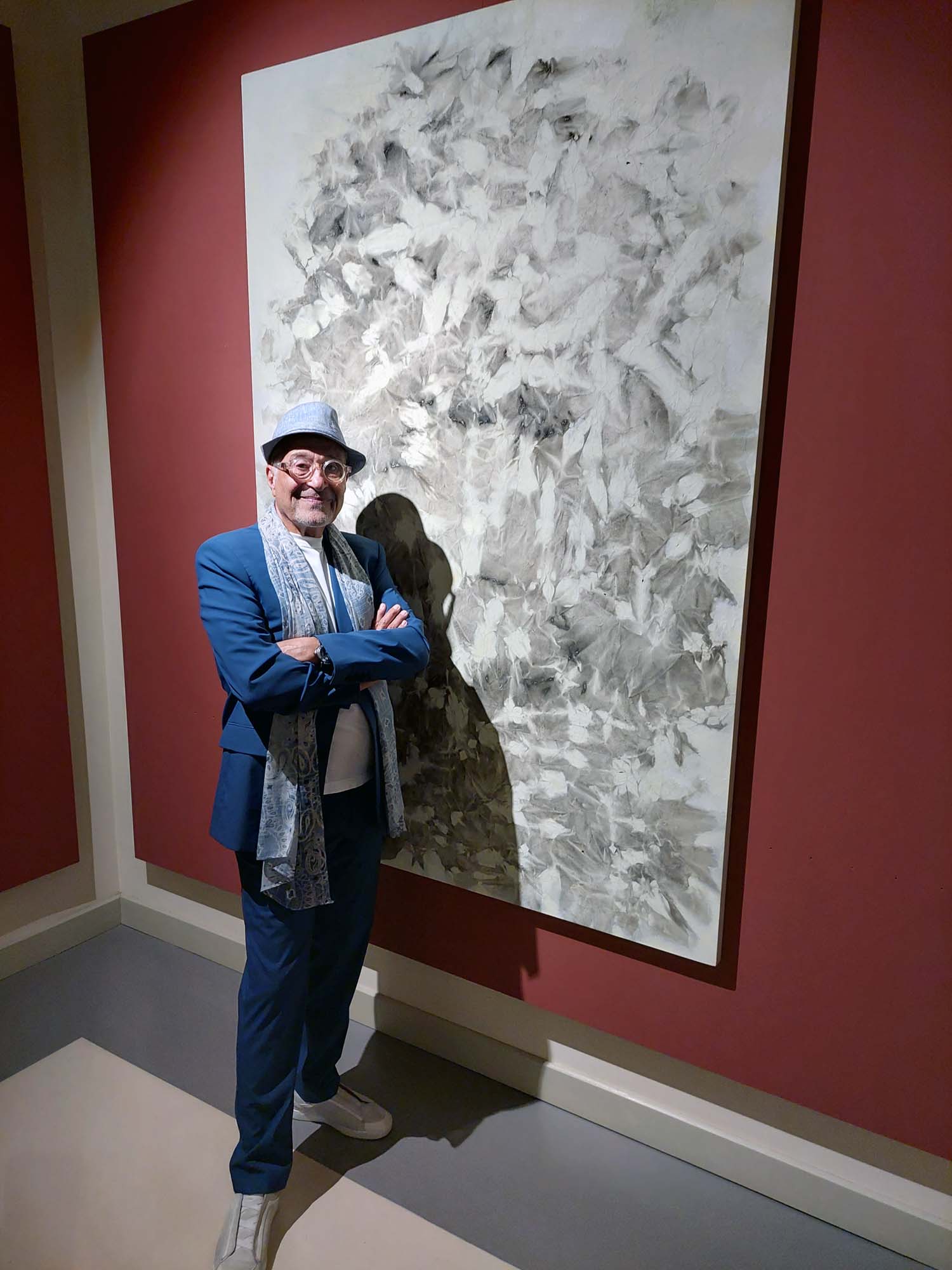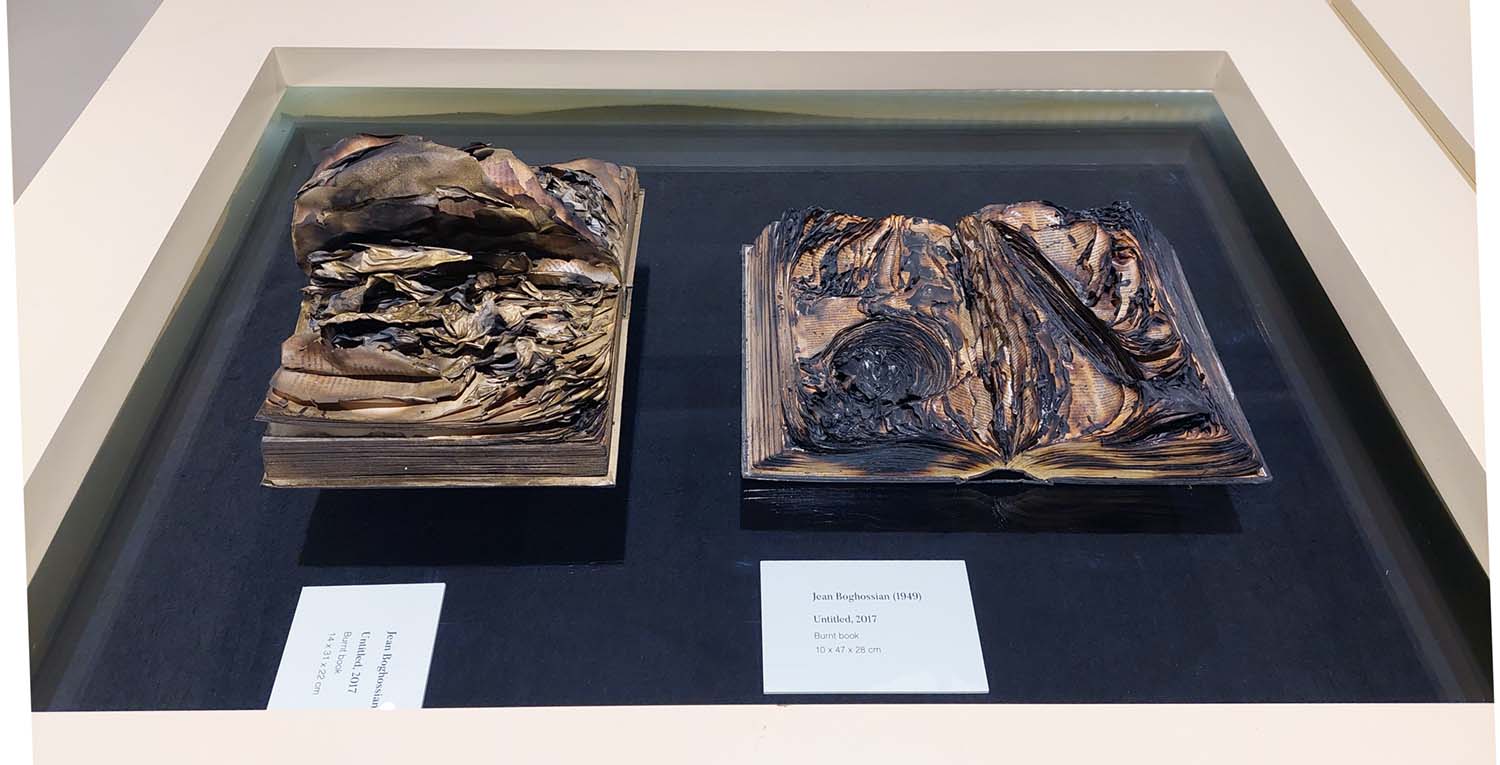
Jean Boghossian’s unique artworks showcased in Palermo
PALERMO - The breathtaking solo exhibition of Aleppo-born Lebanese-Belgian artist Jean Boghossian is being held in many venues, including Villa Zito, across Sicily’s capital of Palermo.
Titled “The Language of Fire – Flaming Imaginary. Shapes and Rhythms of Universal Instability,” and curated by Bruno Corà, the exhibition showcases a collection of artworks ranging from paintings on canvas and eventails (fans) created with fire to burnt books.
Born in Syria’s historic city of Aleppo in 1949 to an Armenian family of jewellers, Boghossian moved to Lebanon when he was twelve years-old and settled in Beirut until the civil war - which erupted in 1975 - forced his family to move to Belgium.
Asked if Lebanon’s civil war had had an impact on his artworks, Boghossian said that he was a positive man although there was some impregnation in his subconscious.
“Fire for me has to be construction rather than destruction,” Boghossian told Middle East Online.

“So what you see here is art you don’t see war. You see a representation of smoke and fire but at the same time you have pigments, you have joyful moments, you have the light that shows behind the smoke,” he said.
“You don’t have light if you don’t have dark,” he added.
Boghossian’s artistic talent did not stem from his upbringing in the Middle East.
“I think I learned art in the West, because I was very young when I left the Middle East. We didn’t really have a history of art and didn’t know what art was and everybody was thinking of surviving during Lebanon’s civil war,” he said.
“I didn’t feel contemporary art until I came to Europe and visited museums to discover art. My studies at the Royal Academy of Fine Arts in Brussels helped understand art better and got me hooked.”
Boghossian started painting with brush all the steps of the history of art throughout his academic studies in Belgium, not thinking about using fire in the beginning.
“When I jumped into abstraction, I was testing the collage, the arrachage .. and all that helped me advance in my research,” said Boghossian.
“Then I decided to test the blowtorch on paint to see at what time the yellow becomes brown, what time brown becomes black and what time black becomes a hole,” he said.
“And then I started discovering if I can make fantastic things through the blowtorch. This is how I developed my artwork with smoke and fire on canvas in order to come up with these results,” he added.
Boghossian acknowledged that most of the time he didn’t know what was going to come up with the blowtorch. “It all has to do with my will and hazard.”
“Of course fire does what it wants but I try to tame it and mate it but I am not able to do what I exactly want. Ninety percent of the cases, I reach what I want, but sometime that artwork is totally destroyed and I have to start something new,” he said.
This is the first time Boghossian has designed and created an exhibition specifically for Sicily. His pictorial and plastic language, aimed at creating works using pigments, acrylic and oil colours by using fire, is one of the most radical expressions of this technique started by masters like Alberto Burri and Yves Klein, and developed by artists such as Jannis Kounellis, Pier Paolo Calzolari and other protagonists of the avant-garde of the sixties.
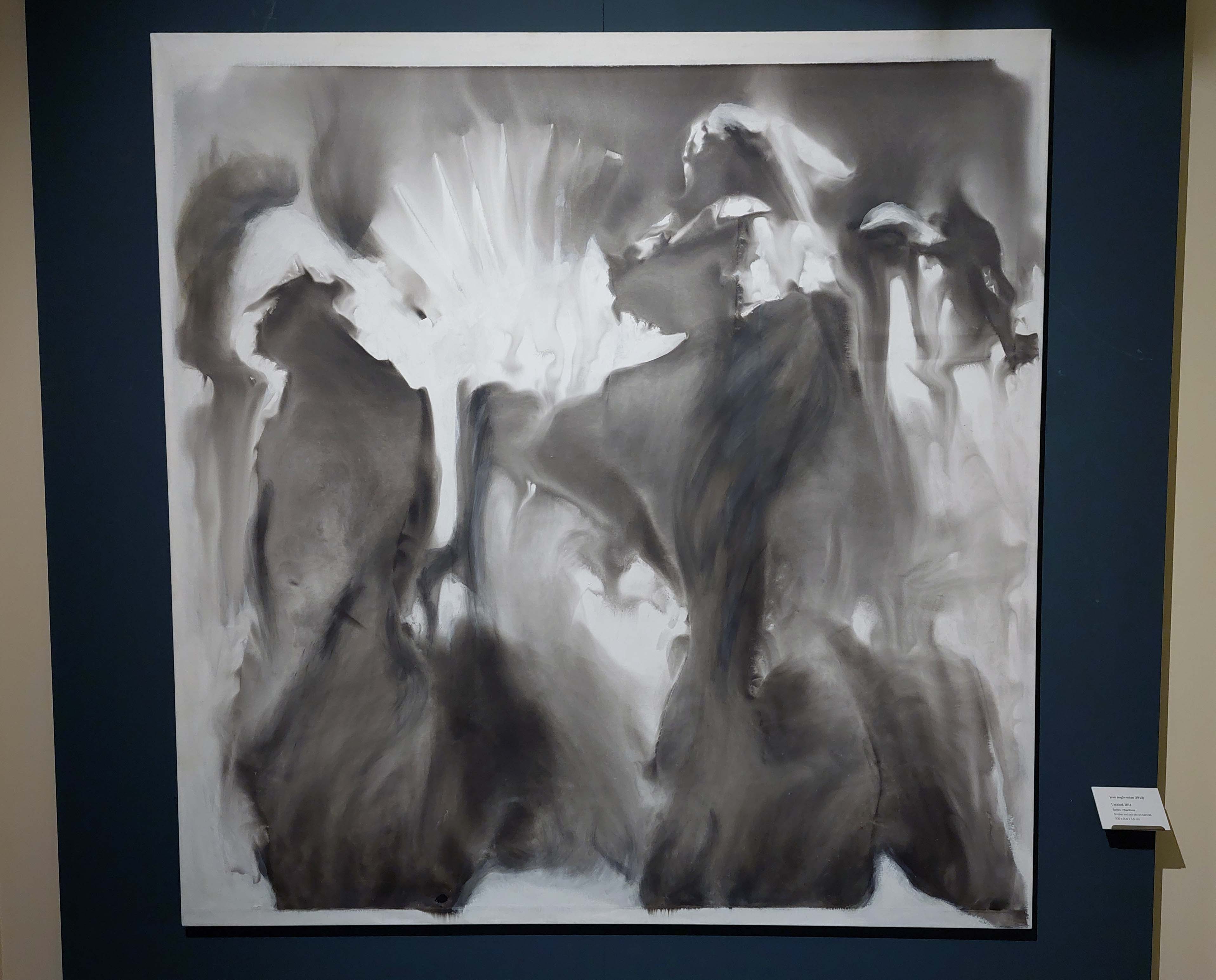
“I think what I show here in my collection is quite unique in the sense that very few artists, including Burri and Klein, worked with fire,” he said.
“In other terms, I think fire chose me to reveal it because it needs somebody to use it to give you what you see here. So I tame fire enough to collaborate with me and sometimes give the result I expect, but not totally,” he added.
The works on display illustrate the path of research and experimentation that now distinguishes Boghossian in the European and international artistic landscape, thanks to the regularity and diversity of the results obtained by the use of fire. The extensive repertoire presented at Villa Zito has been complemented by moments of original creation by Boghossian in different spaces of the Palazzo Branciforte.
A selection of his work is featured in the most prestigious private and public collections in numerous European, Middle Eastern, and Asian countries.
In the rooms of Villa Zito, the following cycles of works have been taking place since 2001 up to the present day: Abstract acrylics and oils on canvas, Combustions of collages, Traces of combustion on canvas, Fire smoke and pigment on canvas, Smoke and pigments on canvas, Combustion smoke and pigment on canvas, Burnt wood sculpture, Exultet / smoke and pigments on acrylic on paper, Combustions of paper and acrylic collages, Smoke and ink drawings, Mixed techniques and fire on canvas, Eventails, Combustions and smoke on paper, Burnt books, Combustions and smoke on paper. A room is also dedicated to videos portraying him while creating his works. The exhibition includes over a hundred works by the artist.
Fondazione Sebastiano Tusa, following the teachings of the great archaeologist and scholar, has created one of the most comprehensive anthological exhibitions of Boghossian, in collaboration with the Municipality of Palermo and Fondazione Sicilia.
Boghossian’s solo exhibition is being held until October 9, 2023.

